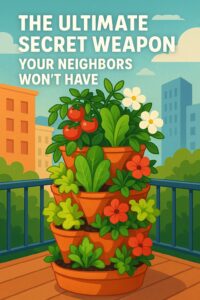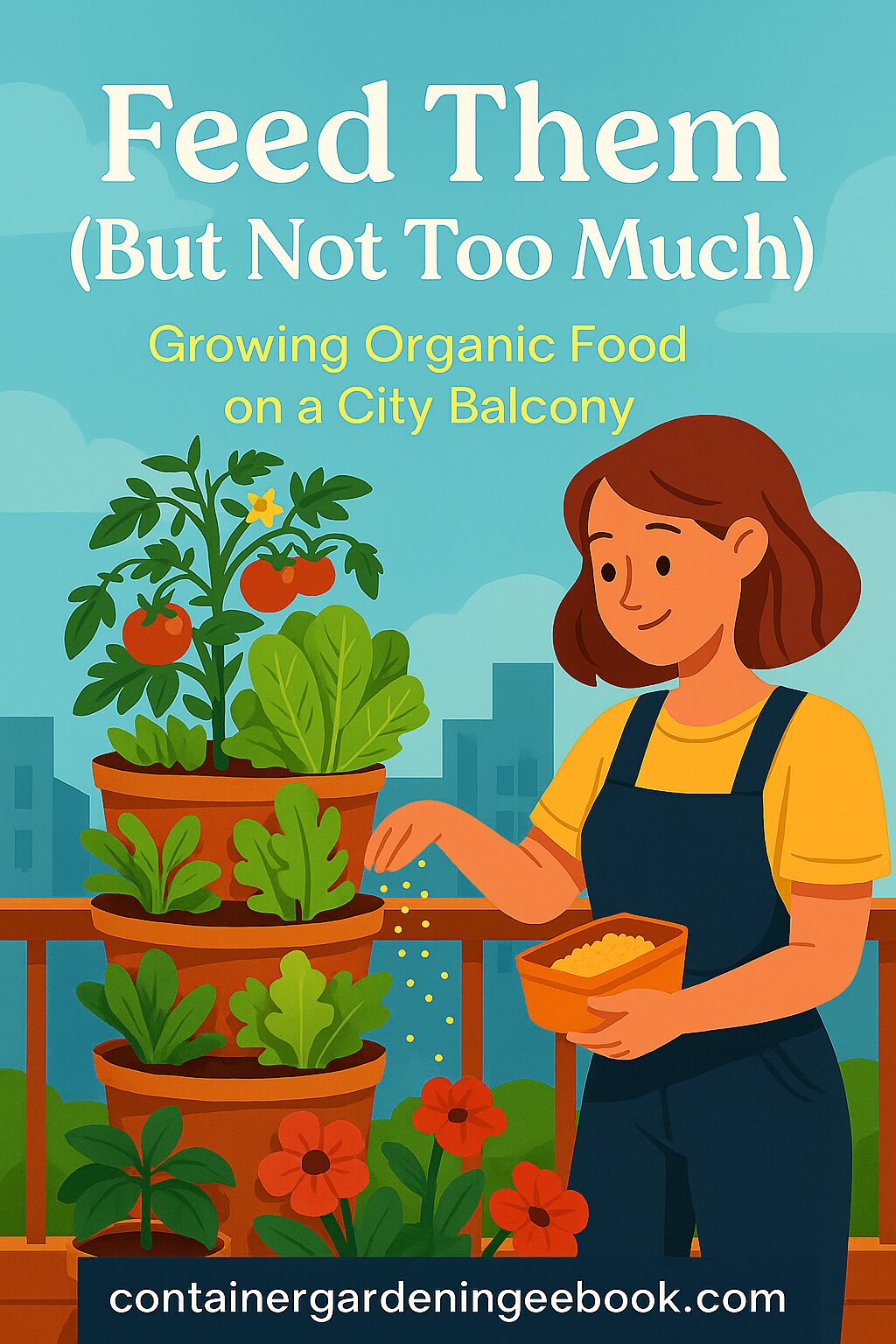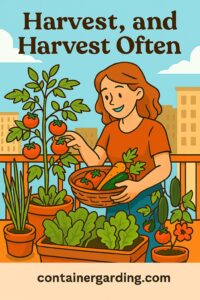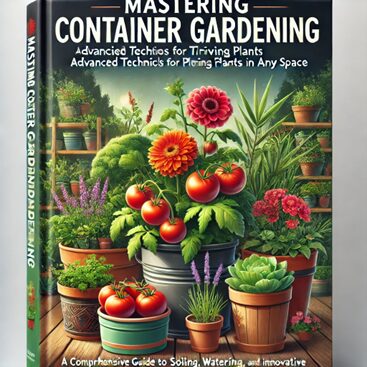Growing Organic Food on a City Balcony: 13 Amazing Secrets
Affiliate Disclaimer
This post contains affiliate links. If you purchase through these links, I may earn a small commission at no additional cost to you. This helps support the creation of more helpful content. Thank you for your support!
Discover the Power of Container Gardening
To Ditch Sad Supermarket Produce!
Let’s be honest. You’ve stared into the soul of a sad, plastic-wrapped basil plant at the supermarket and thought, “I can do better.” You, a savvy, health-conscious urbanite, deserve the crisp, vibrant taste of genuinely fresh produce. But your gardening experience is limited to a succulent that met a tragic end in 2019 (we don’t talk about Bartholomew).
Fear not. The dream of growing organic food on a city balcony isn’t some far-off fantasy reserved for people with backyards and an alarming number of plaid shirts. It’s completely achievable, even if your “outdoor space” is a concrete slab with a lovely view of a brick wall.
You just need the secrets. The real, game-changing techniques that transform a barren balcony into a personal produce aisle.
In This Article
- The Great Balcony Lie: What Most “Gurus” Get Wrong
- Go Vertical or Go Home
- Choose Your Plant All-Stars
- Become a Sun Mapper
- The Secret of “Thirsty” vs. “Parched”
- Soil is Everything (Don’t Just Use Dirt)
- Give Them a Good Home
- The Ultimate Secret Weapon Your Neighbors Won’t Have
- Befriend the Bees (and Other Pollinators)
- Create a Faux-Monsoon
- Feed Them (But Not Too Much)
- Group Plants with Similar Needs
- Read the Leaves
- Harvest, and Harvest Often
The Great Balcony Lie: What Most “Gurus” Get Wrong
Many guides on growing organic food on a city balcony will tell you to simply “get some pots.” This is like telling someone who wants to win a Grand Prix to “get some wheels.” It’s not wrong, but it’s criminally incomplete. You’ll end up with three spindly tomato plants that yield exactly four cherry tomatoes before being overrun by mysterious tiny flies.
To truly succeed, you need to think less like a gardener and more like a brilliant, slightly mad scientist. You’re not just potting plants; you’re creating a high-efficiency, self-contained ecosystem. And that, my friend, is where the magic happens.

1. Go Vertical or Go Home
The first rule of the urban gardening fight club is to stop looking at the floor. The real secret to successfully growing organic food on a city balcony is to look up. Railing planters, wall-mounted trellises, and hanging baskets transform your safety rail, empty walls, and even the air into a multi-level food factory.

3. Become a Sun Mapper & 4. The Secret of “Thirsty” vs. “Parched”
Before you buy a single seed, track the sun’s journey across your space for one day. This gives you a precise map of your unique microclimate. This knowledge dictates your entire planting strategy. Also, throw out any idea of a rigid watering schedule. The only schedule you need is the one your plants give you. Use the ultimate secret weapon: your finger. Stick it two inches into the soil. If it’s dry, water. If damp, walk away.

7. The Ultimate Secret Weapon & 8. Befriend the Bees
What if you could grow 50 plants in just four square feet? It’s called the Garden Tower® 2. It’s a self-contained ecosystem with a built-in composting system. You drop kitchen scraps in the top, and worms transform it into organic fertilizer that feeds your plants. To ensure your fruit-bearing plants produce, you also need pollinators. Plant colorful, nectar-rich flowers like marigolds or lavender alongside your veggies to attract them.

11. Group Plants with Similar Needs & 12. Read the Leaves
Don’t put a water-guzzling basil next to a drought-loving rosemary. Group plants with similar needs to create harmony. Your plants are constantly talking to you through their leaves. Yellowing leaves often mean overwatering. Brown, crispy edges mean they’re thirsty. Long, pale stems mean they need more sun. Spend 60 seconds each evening observing them to catch problems early.

13. Harvest, and Harvest Often
This might be the most important secret of all: you need to be ruthless. For many plants, especially herbs and leafy greens, harvesting is not the end—it’s a signal to grow even more. When you snip basil for your pasta, you’re preventing it from flowering and telling it to get bushier. Don’t be shy; you are literally pruning your plants into being more productive.


Leave a Reply